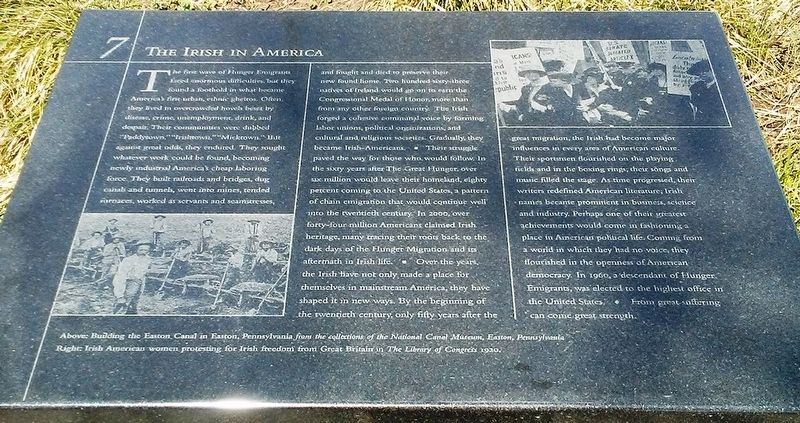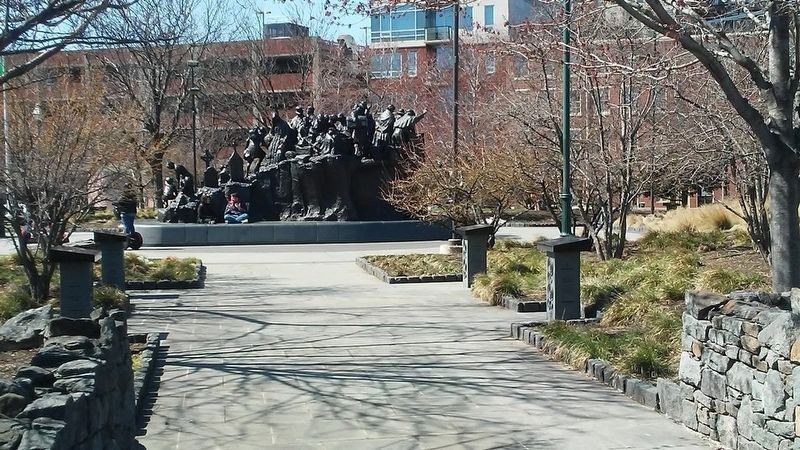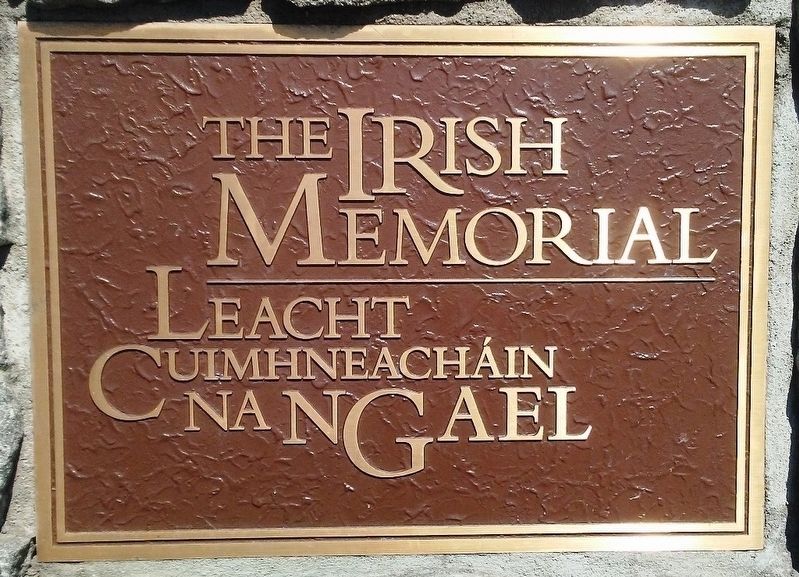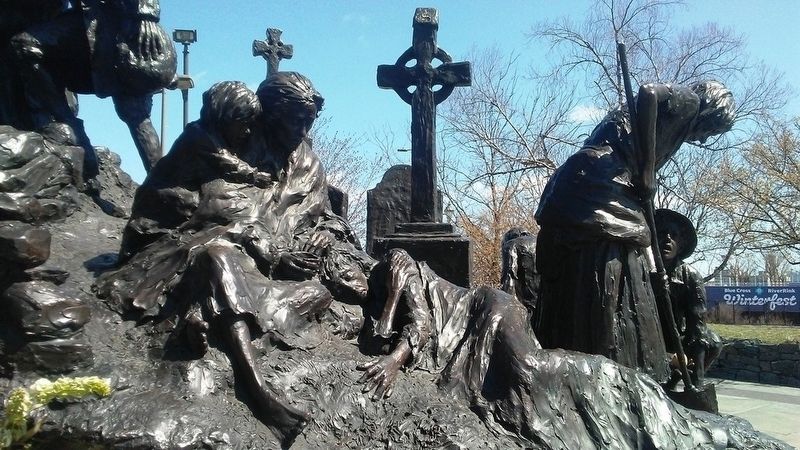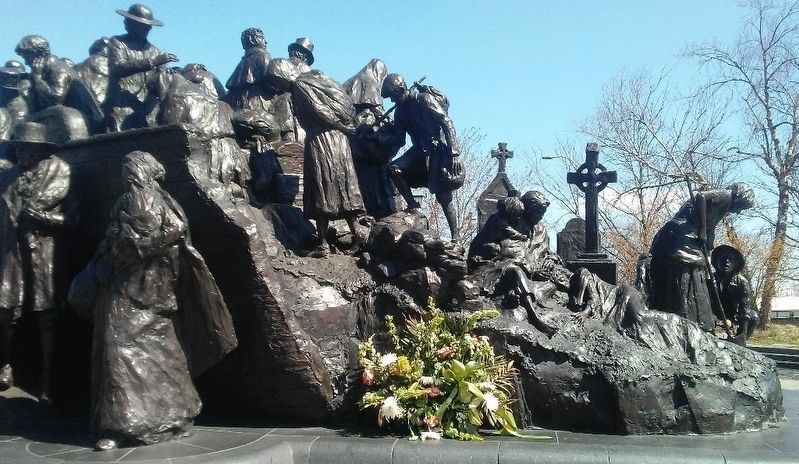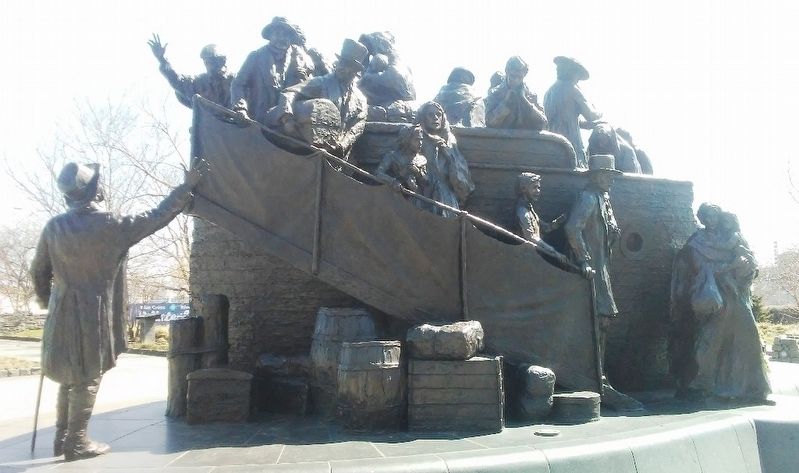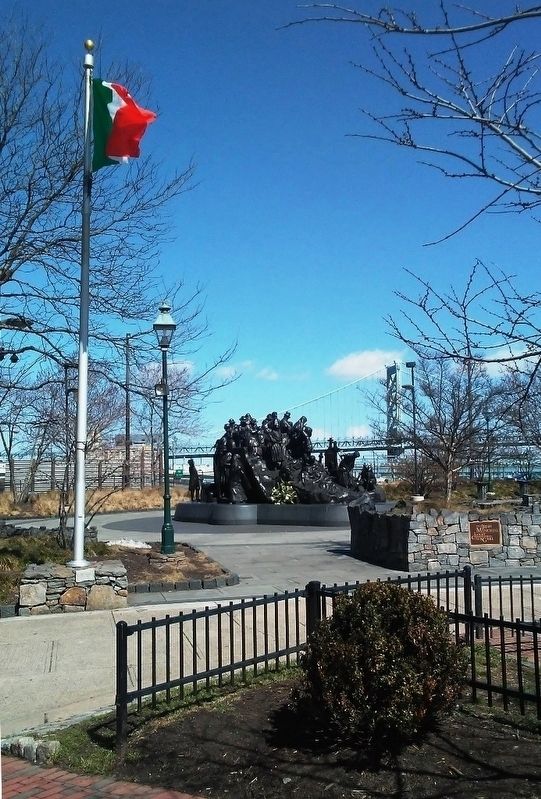The Irish in America
The first wave of Hunger Emigrants faced enormous difficulties, but they found a foothold in what became America's first urban, ethnic ghettos. Often, they lived in overcrowded hovels beset by disease, crime, unemployment, drink, and despair. Their communities were dubbed "Paddytown," "Irishtown," "Micktown." But against great odds, they endured. They sought whatever work could be found, becoming newly industrial America's cheap laboring force. They built railroads and bridges, dug canals and tunnels, went into mines, tended furnaces, worked as servants and seamstresses, and fought and died to preserve their new found home. Two hundred sixty-three natives of Ireland would go on to earn the Congressional Medal of Honor, more than from any other foreign country. The Irish forged a cohesive communal voice by forming labor unions, political organizations, and cultural and religious societies. Gradually, they became Irish-American.
• Their struggle paved the way for those who would follow. In the sixty years after The Great Hunger, over six million would leave their homeland, eighty percent coming to the United States, a pattern of chain migration that would continue well into the twentieth century. In 2000, over forty-four million Americans claimed Irish heritage, many tracing their roots back to the dark days of the Hunger
• Over the years, the Irish have not only made a place for themselves in mainstream America, they have shaped it in new ways. By the beginning of the twentieth century, only fifty years after the great migration, the Irish had become major influences in every area of American culture. Their sportsmen flourished on the playing fields and in the boxing rings; their songs and music filled the stage. As time progressed, their writers redefined American literature, Irish names became prominent in business, science and industry. Perhaps one of their greatest achievements would come in fashioning a place in American political life. Coming from a world in which they had no voice, they flourished in the openness of American democracy. In 1960, a descendant of Hunger Emigrants, was elected to the highest office in the United States.
• From great suffering can come great strength.
[Illustration captions read]
Above: Building the Easton Canal in Easton, Pennsylvania from the collections of the National Canal Museum, Easton, Pennsylvania
Right: Irish American women protesting for Irish freedom from Great Britain in The Library of Congress 1920.
Erected 2003 by Concerned Citizens and Organizations. (Marker Number 7.)
Topics. This historical marker is listed in this
Location. 39° 56.873′ N, 75° 8.507′ W. Marker is in Philadelphia, Pennsylvania, in Philadelphia County. It is in Old City. Marker is on Chestnut Street east of Front Street, on the right when traveling east. Touch for map. Marker is at or near this postal address: 100 Chestnut St, Philadelphia PA 19106, United States of America. Touch for directions.
Other nearby markers. At least 8 other markers are within walking distance of this marker. Passage and Emigration (here, next to this marker); The Lessons of The Great Hunger (here, next to this marker); Arrival and Reception (here, next to this marker); The Irish Memorial / Leacht Cuimhneacháin na nGael (a few steps from this marker); Starvation (within shouting distance of this marker); An Gorta Mór - Ireland's Great Hunger (within shouting distance of this marker); The Potato Blight - Its Origin (within shouting distance of this marker); Ireland's Past - A Prelude to Disaster (within shouting distance of this marker). Touch for a list and map of all markers in Philadelphia.
More about this marker. Marker is part of The Irish Memorial.
Also see . . .
1. The Irish Memorial [Philadelphia]. (Submitted on March 30, 2017, by William Fischer, Jr. of Scranton, Pennsylvania.)
2. History of the Irish Americans in Philadelphia (Wikipedia). (Submitted on March 30, 2017, by William Fischer, Jr. of Scranton, Pennsylvania.)
3. The Irish in America: 1840's-1930's. (Submitted on March 30, 2017, by William Fischer, Jr. of Scranton, Pennsylvania.)
4. The Irish in America: The Long Journey: Up From City Streets (Documentary on YouTube). (Submitted on March 30, 2017, by William Fischer, Jr. of Scranton, Pennsylvania.)
Credits. This page was last revised on February 2, 2023. It was originally submitted on March 30, 2017, by William Fischer, Jr. of Scranton, Pennsylvania. This page has been viewed 200 times since then and 7 times this year. Photos: 1. submitted on March 30, 2017, by William Fischer, Jr. of Scranton, Pennsylvania. 2. submitted on March 29, 2017, by William Fischer, Jr. of Scranton, Pennsylvania. 3, 4, 5, 6, 7. submitted on March 28, 2017, by William Fischer, Jr. of Scranton, Pennsylvania.
